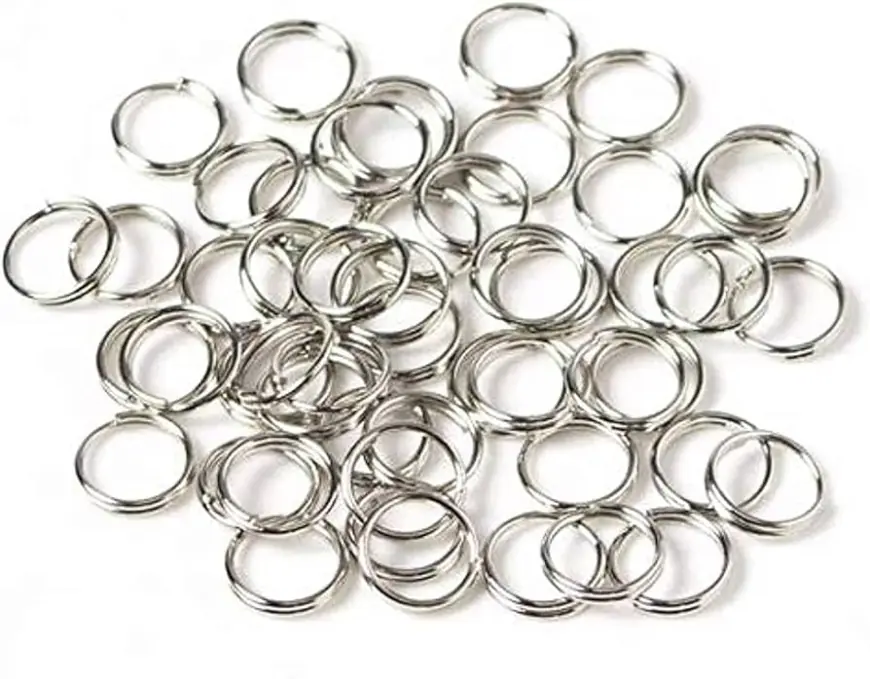Split Jump Rings vs. Open Jump Rings: Which Should You Use?
A comparison article covering strength, ease of use, appearance, and best applications for each type.

Jump rings are a foundational component in jewelry making, acting as essential connectors between clasps, charms, chains, and pendants. Two of the most commonly used types are split jump rings and open jump rings. While they may seem similar in size and shape, they serve slightly different purposes and have distinct strengths. Choosing the right type can significantly impact the durability, appearance, and functionality of your final design. In this article, we’ll compare split and open jump rings to help you decide which is best for your next project.
What Are Open Jump Rings?
Open jump rings are single loops of wire with a small gap that allows you to open and close them using pliers. They’re extremely popular in jewelry making due to their simplicity, ease of use, and availability in various sizes, gauges, and materials.
Pros:
-
Easy to open and close with two pairs of pliers
-
Ideal for quick assembly and minor adjustments
-
Available in a wide range of metals and finishes
-
Perfect for chainmaille, earrings, and decorative linking
Cons:
-
Can come undone if not closed properly
-
May require soldering or reinforcing for high-stress connections
Open jump rings are ideal for light- to medium-duty jewelry pieces where you want flexibility, aesthetics, and ease of assembly.
What Are Split Jump Rings?
Split jump rings look similar to miniature key rings, made from a coil of wire wrapped into two full turns. To attach them, you slide the component between the coils rather than prying the ring open.
Pros:
-
More secure than open jump rings—won’t open accidentally
-
Great for high-stress areas like keychains or bag charms
-
Stronger and more durable for weight-bearing parts
Cons:
-
Harder to attach—requires split ring pliers for efficiency
-
Slightly bulkier than open jump rings
-
May snag on delicate materials or fabrics if not aligned smoothly
Split jump rings are perfect when strength and security are the top priority. They’re commonly used in functional items like keychains, ID badge holders, and heavy pendants.
Key Differences: Side-by-Side Comparison
| Feature | Open Jump Rings | Split Jump Rings |
|---|---|---|
| Ease of Use | Quick to open/close with pliers | More difficult; needs special pliers |
| Strength | Less secure unless soldered | Extremely secure and strong |
| Flexibility | Easy to adjust or replace | Not ideal for frequent adjustments |
| Appearance | Sleek and minimal | Slightly bulkier/coiled appearance |
| Best For | Earrings, chainmaille, pendants | Keychains, charms, heavy components |
Which Should You Use?
Choose open jump rings if:
-
You need flexibility and quick assembly
-
The design isn’t load-bearing or overly delicate
-
You want a clean, minimal look
-
You're working on earrings, necklaces, or decorative links
Choose split jump rings if:
-
You need extra strength and security
-
You’re attaching heavy or high-use components (like keychains)
-
You want a more permanent connection
-
You're making functional or industrial-style jewelry
Final Thoughts
The choice between split jump rings and open jump rings depends on your specific jewelry-making goals. If you're prioritizing ease of use and a delicate look, open jump rings are likely your go-to. But when durability and strength are non-negotiable, split jump rings provide the added reliability your designs need. By understanding the strengths and limitations of each, you can create jewelry that’s not only beautiful but built to last.
What's Your Reaction?
 Like
0
Like
0
 Dislike
0
Dislike
0
 Love
0
Love
0
 Funny
0
Funny
0
 Angry
0
Angry
0
 Sad
0
Sad
0
 Wow
0
Wow
0


















































